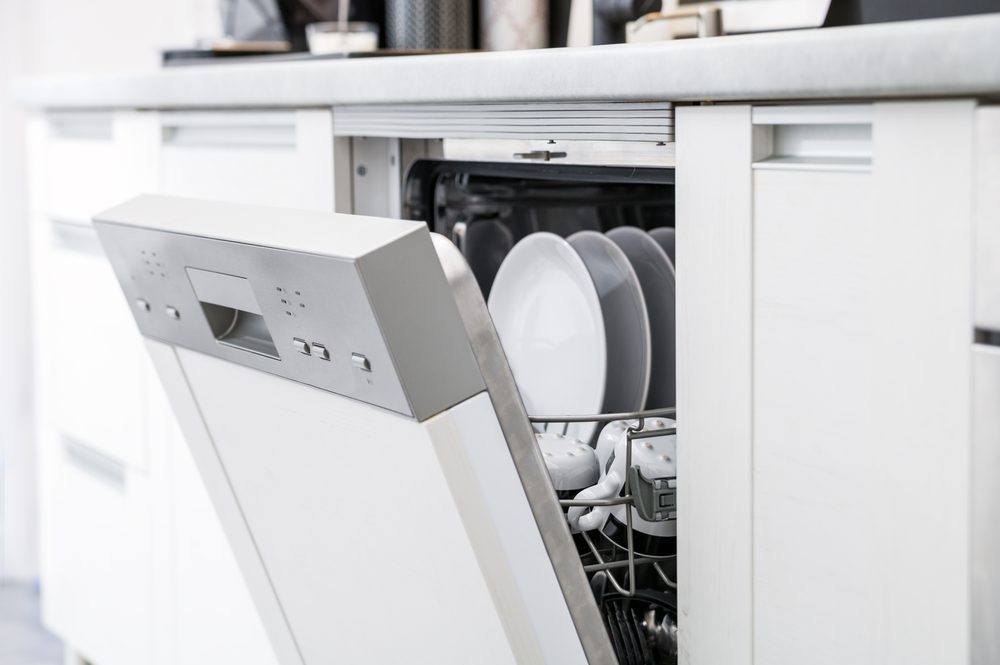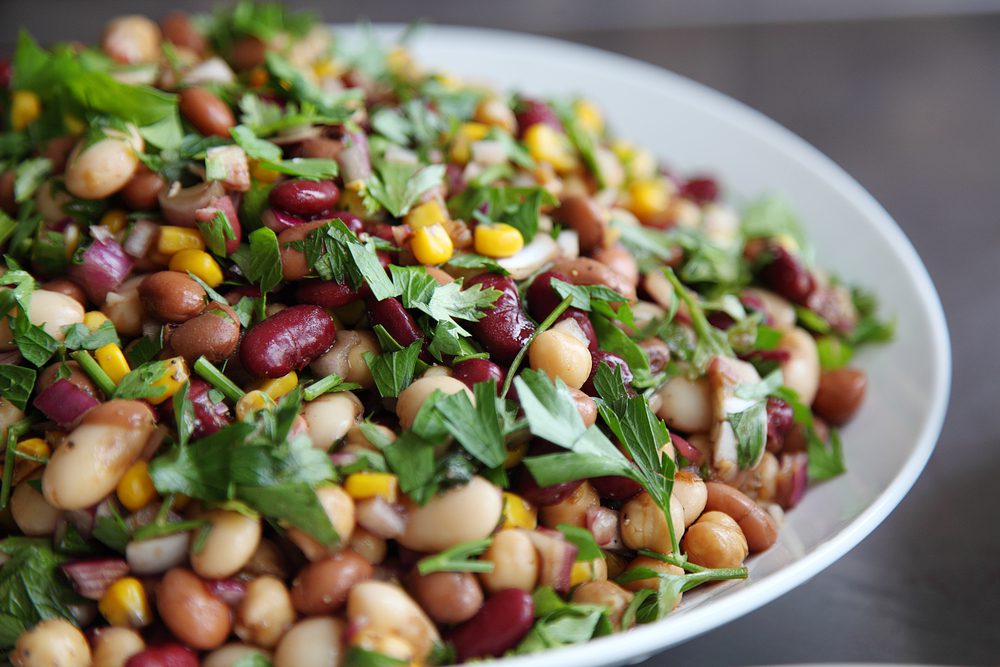If you want to start budgeting but you don’t know where to begin, it’s a good idea to structure your money-saving ideas on areas that are most important to you. Instead of figuring out a daunting, all-encompassing plan for your household, why not make different lists for every area of your house?
In this article, we’ll discuss money-saving tips for the kitchen.
A lot of people consider this to be the most difficult area to cut back on, but anyone who is determined enough can really make meaningful changes to their lifestyle. These are just a handful of tips. Even if you employ a small amount, your wallet will begin to see the a marked difference. If you put the time and effort into all of them, you’ll be surprised by how much money you’ll be able to save on a monthly basis.
Best of all? You’ll be asking yourself why you didn’t do this sooner…
Cook from scratch
Let’s get the obvious out of the way first. According to a study, the average American household spends $7,203 a year on food. $4,049 is spent on food at home, meaning that the remaining $3,154 is spent on food away from the home.
Eating out and grabbing a take away might seem cheap and convenient and we won’t lie, it often is. But if you want to save money in the long term, these are the first two things you need to cut down.
Cooking food at home has other benefits too, mainly health-related. You’ll know exactly what goes into your food so you can avoid harmful ingredients. Prepping meals with your family or friends is also a great way to spend quality time together with the minimal of cost.
Make a Meal with What You Already Have in Your House
People tend to go out and buy carts full of groceries when they decide to change their kitchen lifestyle, but we’re here to tell you otherwise. You most definitely have food around the house.
Figuring out a meal plan with whatever’s in your fridge, freezer and pantry is a great place to start because you’ll be able to save money and see results straight off the bat. There are many websites out there that allow you to input ingredients and it will suggest a recipe.
When you start off like this you’ll immediately notice the surplus of cash in your purse or wallet and the positive reinforcement will encourage you to keep going! So have a look around your kitchen to see what’s already there and get creative.
Stock up on Sale Items
Once you’re done using whatever you’ve got laying around the house, it’s time to start stocking up. Be mindful of your first few shopping sprees.
My strategy was to look for sales first, and I bought everything I knew I used a lot in bulk. If I needed to supplement other ingredients, I only did so after, no matter how tempted I was.
And don’t think that you’ll just buy more food to go to waste. Did you know you can freeze a lot of fresh foods? Just put your butter, meat, chopped vegetables, chocolate chips, berries as well as many other items in your freezer to stretch those dollars. You’ll be surprized how long they will last.
Avoid the Grocery Store

This is probably the most difficult rule to maintain. If you’re used to popping in a grocery store for a snack you’re going to have to reign yourself in. After a few days or even weeks, you’ll notice just how dependent you were on these visits and how much they impacted you finances.
Because each visit means more money spent, avoiding the grocery store is an obvious way to stay on top of your finances. Plan on weekly or even monthly visits. After a while, you can start implementing a budget for each shopping spree.
Oh, and you’ve probably heard this rule before but we’ll say it again. Don’t go shopping on an empty stomach! You’ll be far more likely to impulse buy snacks or foods you don’t need just for the sake of convenience and then you’ll throw your whole plan through the loop.
Buy Generic
Avoid big price tags by reaching for generic items instead. If you’re worried about quality, check the ingredients list of whatever you’re picking up. We know these can be confusing to a lot of people, especially at the start of this journey. So we also advise you to try a few generic items before deciding to buy anything in bulk.
You shouldn’t fear testing them out just because they don’t come with a familiar brand name on the packaging, many are still just as tasty.
Visit Dollar or Discount Stores
Save even more money by visiting discount and dollar stores. This comes with a caveat, though. Before making a purchase, make sure you’re actually saving money by checking sizes and those all important expiration dates. When it comes to the latter you can always freeze whatever might go off soon.
It’s the size of the product that might make you fall into a trap. You might think you’re looking at a good deal but in reality, taking that extra moment to check could save you money. Plus, it’s a good habit to start checking out all that information on the packaging.
Often, we’re attracted by flashy logos and bright colors and overlook the really important stuff. If you want to save money you have to have a closer relationship with what’s inside a product than what’s on the outside. After all, ‘you are what you eat’.
Eat Seasonably
Doing this will help you appreciate seasonal products all year round. Instead of reaching for things you’re comfortable with, try to get out of your comfort zone a little bit and your wallet will thank you for it.
For example, don’t buy berries in the winter, they’ll be several times more expensive. Wait for the warm season and we guarantee you’ll love them even more. That’s partly because abstaining from them will make the reunion so much sweeter, but also because they won’t be artificially enhanced!
Have a ‘Pantry Month’
If you’ve followed our ‘stock up’ tip, it’s time to also implement a ‘pantry month’. To put it simply, you should attempt to cook and eat whatever you’ve got in your home for a longer period of time whilst not getting distracted by new recipes that require a lot of different ingredients not currently sitting in your pantry.
If you must, as we’re sure you will allow yourself a small amount of money to buy certain things like milk, eggs or bread, but be honest about your spending habits during this period. You’ll be surprised by the results and we’re sure it’s something you’ll implement in the following months again and again.
Make Your Own Coffee
We don’t tend to think about how much money we spend on coffee on a daily basis. A warm cup of joe is so cheap these days there’s hardly any reason to cut back, right? But the truth will be truly painful down the line.
The $1 coffee you buy today translates to $7,60 in 30 years, thanks to inflation. You’ll be looking at $5,200 down the line, money that’s better off spent elsewhere.
Brewing your own coffee is a lot cheaper. Plus, you won’t have to worry about queues or the new barista getting your order wrong. If anything, you’ll be able to try out new blends without breaking the bank each morning!
Go Meatless
Meat lovers might roll their eyes at this tip, and we get it. It’s not for everyone! We’re not suggesting going vegetarian, we’re just saying what everyone’s thinking: meat is expensive. Cutting down here and there will save you money, and you don’t have to give up on your favorite dishes because of it.
There are plenty of meatless meals that don’t involve having to buy meat alternatives, just find something that works for you and try to work that meal into your monthly diet. Even just one day a week can make a difference and you don’t have to change your lifestyle to accommodate this tip. Also, cutting down on your meat consumption can lower your carbon footprint, so you’ll also be helping to save the planet.
Add a Filler to Ground Beef
Don’t wanna give up meat but wanna cut costs anyway? Incorporating fillers to ground beef will make any meal last longer. Oats, rice, lentils, and tomato sauce will work in one of two ways, depending on how you go about adding them to the recipe.
Experimenting can lead you to your desired effect. Either you won’t even be able to tell there’s any difference or you’ll add more texture and flavor to your meal. Which ever path you chose, you’ll see just how much you can stretch your ground beef without paying extra.
Avoid the Heat Dry Cycle

A little bit goes a long way. Save on your electricity bill by letting your dishes air-dry instead of relying on the heat dry cycle on your dishwasher. This is probably the easiest tip on this list. All you have to do is, after the washing is done, open your dishwasher and wait!
Swap Paper for Cloth
This might sound old-timey, but our grandparents and parents certainly got something right. Avoiding paper towels will help save the environment and your bank account. There’s nothing wrong with reusing old clothes!
Cut them up into various pieces and use them however you like. Then, just throw them in the washing machine and cycle through various sets. Some people even use old blankets. Where you get your cloths from doesn’t matter as long as you’re not wasting money on paper towels.
Eat Simple Food
Eating simple food won’t just save you money, it’ll also save you time. Chicken soup, spaghetti, beans, rice, a simple sunny side up egg in the morning are just as yummy as meals that take hours to prepare and just as filling.
Sticking to ingredients and flavors you are already familiar with will make every breakfast, lunch and dinner stop looking so daunting.
In time you’re going to learn to experiment with different versions, but having a couple of easy recipes in your arsenal is what’s going to save you most in the long run.
Eat Leftovers
We know a lot of people don’t really like leftovers, and the convenience of snacks, take away food or just plain ol’ eating out makes a lot of us feel even more repulsed by the idea of eating ‘old’ food. But there’s nothing wrong with cooking a bigger dinner only to eat some of it for lunch the very next day.
As long as you store food properly, you don’t have anything to worry about. If you are unsure of when something will go off or that you won’t be able to reach it before then, you can freeze it instead.
Planning your meals so that you’ll be able to bring home-cooked lunches to work is yet another way of saving money, and you can’t argue about the convenience since all you’ll probably have to do is microwave something at the office and then you’re good to go!
Find a Purpose for Everything
Imagine what you could do and how much you could save if you bought a whole chicken and used every last bit of it in your kitchen. Every last part of it could be incorporated into something, from a delicious chicken breast meal right down to using the bones to make a stock for a tasty chicken broth.
Well, you can take that concept and use it for everything else. For example, you could start using leftovers for compost. After you’re done using the green part of an onion, grow your own by using the white bulb and roots.
Or you could try your hand at a kitchen sink soup in which you can basically incorporate any leftovers. This is especially helpful if you don’t have enough of one ingredient left to incorporate in another meal, but too much to throw away without messing up your conscience.
Make Your Own Bread
A common misconception is that making your own bread is difficult and time-consuming. Nothing could be further from the truth. You don’t even need a fancy bread maker to try this out.
In terms of ingredients, you can start out simple with flour, water, yeast, and salt. If you want you can add garlic, onions, potatoes or other vegetables.
But how will you bake your bread, we hear you ask? Simple, buy a few simple terracotta pots, dump your dough in and shove them in the oven. We admit it might take you a little bit of time to get the recipe just right for you, but we promise the joy of making your own bread is well worth it.
Grow Your Own
You might be wondering why you’d need compost, from our previous tip. Everyone can grow plants and herbs, all you need is a little bit of room and a window sill. The more you grow, the less you’ll have to go out and buy.
We guarantee you’ll never want to go back. If you do it just right, and it’s harder not to, you’ll see how good all-natural ingredients really taste, especially when they have been lovingly grown by your own hand.
Eat Beans

Beans may sound like boring vegetables, but they’re some of the most versatile things you could buy in bulk for really cheap. There are tons of recipes that require beans, and most of them are incredibly easy to follow.
Most of the time all you’ll have to do is boil them while whipping up a sauce, so you’ll end up saving time as well.
Make Your Own Seasoning
The issue with a lot of seasoning mixes is that they come with absurd amounts of salt and artificial flavors. By making your own you’ll avoid useless costs and health issues at the same time. Why buy taco or chili seasoning at all?
People assume this is time consuming, confusing and costly. But if you can follow any recipe, we guarantee you’ll find this just as easy.
So, there you have it. These are our 20 tips on how to save as much money as possible in the kitchen. Try them out one by one or all at once and you’ll finally see how many expenses you’ll be able to cut.
Oftentimes these are just costs you won’t even be aware of, and they’ll make a huge difference in the long run. Let us know how you saved money in the kitchen or any money-saving recipes you might have in the comments down below. Bon appetit!!!
You might also like:










